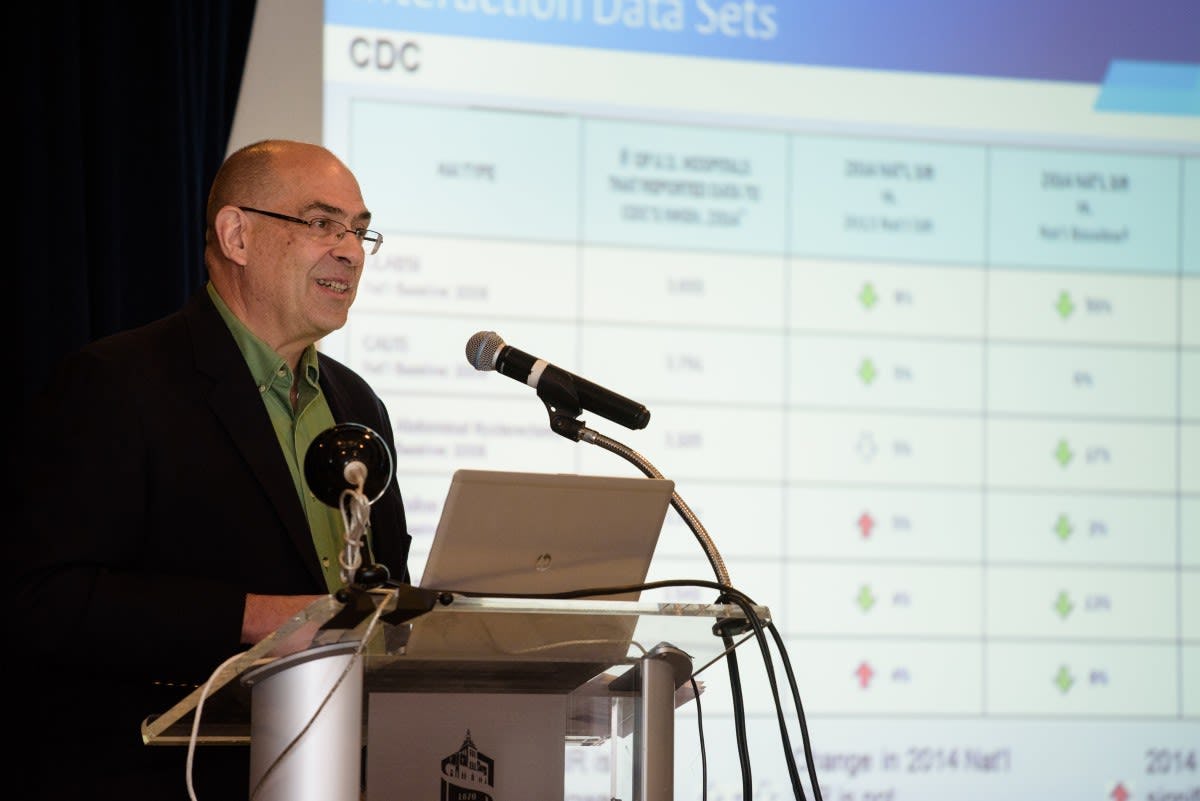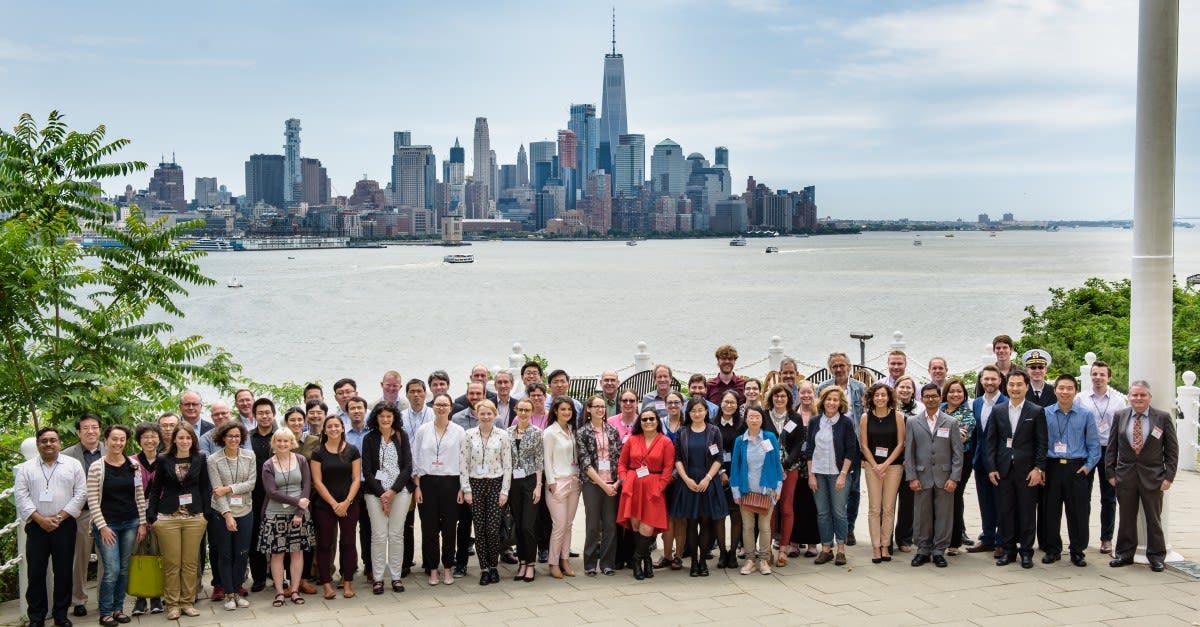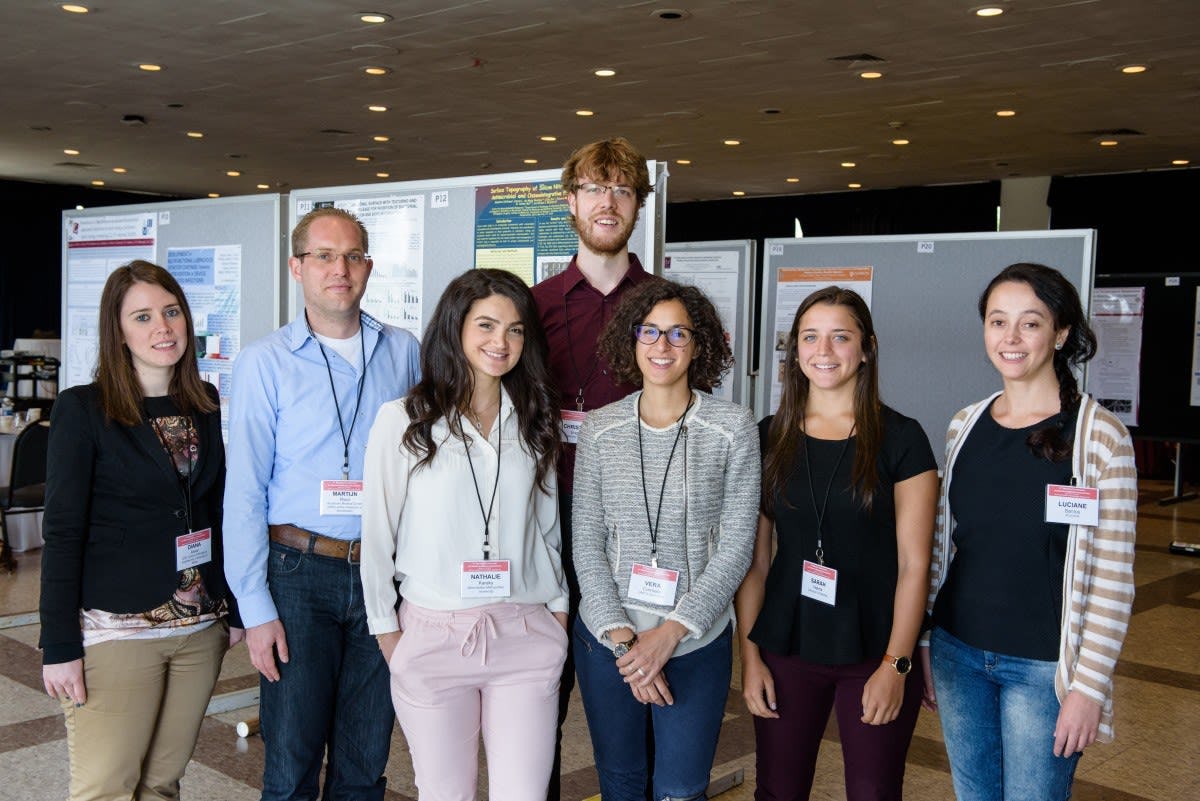Promoting Healing and Preventing Infection at the Stevens Conference on Bacteria-Material Interactions
On June 14 and 15, scientists, clinicians, engineers and regulatory leaders came to Hoboken for the 4th Stevens Conference on Bacteria-Material Interactions. Participants from China, the Netherlands, Portugal, France, Germany, England and elsewhere met to share knowledge of, and discuss better ways to communicate about, infections associated with tissue-contacting biomedical devices.
“It’s a bit like throwing a scientific party,” says conference organizer and professor Matthew Libera of the Department of Chemical Engineering and Materials Science. “The small size is very attractive, promoting lots of interaction. Almost everyone, including graduate students, gets to meet everyone else—even senior colleagues who might be inaccessible at a bigger conference. People are excited about coming here,” he says.
That intimate, informal setting is particularly helpful with this subject matter. Bacteria-material interactions describe a range of causes and behaviors surrounding bacterial infections, particularly infections formed around medical implants.
Bacterial infections caused by implants “don’t happen that often,” Libera stresses, “but when they occur they can have very serious consequences.” The culprit? Biofilm. A biofilm forms when bacteria adhere to a surface and proliferate into a colony that is very difficult to remove and can cause a lot of problems.
Dental plaque is a biofilm. While it isn’t dangerous on its own, over time it can build up and cause damage. "Your dentist knows this," Libera explains. "How often does your dentist say you can stop brushing? Never." That's because bacteria grow on your teeth and secrete acids, which can give you cavities and damage your gums. You prevent those problems with regular maintenance—brushing your teeth to get rid of the bacterial biofilm. However, if you have an implant below the skin you can’t take care of it the way you take care of your teeth. An implant is pretty inaccessible. Thus, when a biofilm forms on an implant the current solution is to remove and replace the implant, and that brings a lot of possible complications. Including another infection.
Any synthetic surface that touches the body, from an artificial heart to a hip implant to a cochlear hearing aid can catalyze biofilm formation. When biofilms aren’t properly treated they can spread and mature. That’s bad because mature biofilms are very resistant to antibiotics—just like antibiotic-resistant superbugs like MRSA.
Stopping those infections is what this conference is all about.
“We can make a better implant if we can promote healing and simultaneously prevent infection,” Libera says, adding “the whole point of this field is to design and develop surfaces that very effectively resist bacterial colonization.”
To that end, the conference covered a lot of ground.
Panels discussed a wide variety of topics, from exploring the differences in bacterial adhesion on engineered surfaces, to developing catheter coatings towards prevention of device-associated infections, and to methods using small animal models and big-data analysis methods to assess the effectiveness of new materials.
All of the previous conferences involved clinicians. This year’s conference included Dr. Jim Ficke, head of orthopaedic surgery at Johns Hopkins University and Dr. J. Thomas Roland, otolaryngologist and cochlear-implant expert at the NYU Langone Medical Center.
“The clinical presentations are a very important aspect of the Conference and the field,” says Libera. “Clinicians see the problems and challenges first hand. The scientists and engineers need to hear the clinical perspective to focus research and development towards real impact rather than towards just another set of journal publications.”
The final panel featured Dr. Ficke, Prof. David Grainger of the University of Utah, Dr. Scott Phillips from the U.S. Food & Drug Administration, and Dr. Binjie Xu of Sharklet Technologies. Among other things, the group discussed the communication problem that the field has describing their work to the public.
While the scientific community understands what the word biofilm means, the general public doesn’t. Policy makers in government, regulatory agencies and in the health insurance industry need to understand the significance and impact that implant infection has at the societal level. “No amount of innovation will solve the implant-infection problem without policies and practices that enable these innovations to be translated to clinical practice,” says Libera.
The concluding panel discussion gives focus to the next Stevens conference. Conference chair Libera says, “I’d like to tune the 5th Stevens conference towards how we can influence public awareness and public policy,” he says. “The four conferences we’ve had thus far have gotten increasingly more sophisticated, impactful, and respected—to the point where it is establishing Stevens, and this conference, as a destination for everyone working in this field.”
“We can and should do even more.”












